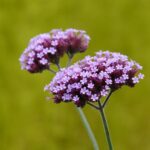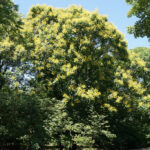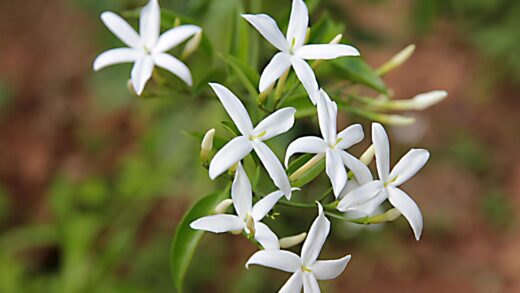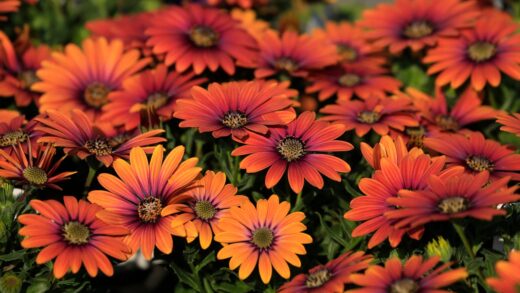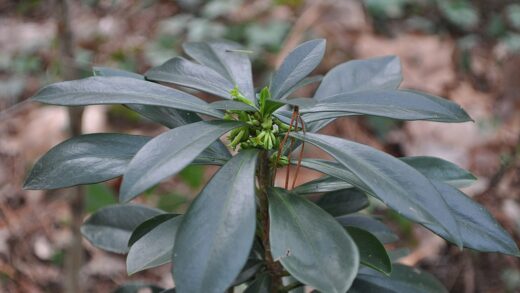Despite their well-deserved reputation as hardy, low-maintenance garden plants, marigolds are not entirely immune to the challenges posed by diseases and pests. While their pungent aroma famously deters some garden nuisances, making them a popular choice for companion planting, they can still fall victim to certain common ailments and insect infestations. A proactive approach, centered on good cultural practices and regular plant inspection, is the most effective strategy for keeping your marigolds healthy. Understanding the specific threats they may face allows you to identify problems early and intervene effectively, ensuring that minor issues do not escalate into major problems that could compromise the beauty and vitality of your plants.
The majority of diseases that affect marigolds are fungal in nature and are often linked to environmental conditions, particularly excess moisture and poor air circulation. Issues like powdery mildew, botrytis blight (grey mould), and various root rots thrive in damp, humid, and stagnant environments. Therefore, the first line of defense against these diseases is prevention through proper planting and care. This includes ensuring adequate spacing between plants to promote airflow, watering at the base of the plant to keep foliage dry, and planting in well-draining soil to prevent waterlogged conditions around the roots.
On the pest front, while marigolds repel nematodes and other soil-borne pests, their foliage and flowers can sometimes attract sap-sucking insects. Spider mites are a common adversary, especially in hot, dry conditions, where they can quickly multiply and cause significant damage by feeding on plant cells. Aphids are another potential pest, often found clustering on tender new growth and flower buds. Slugs and snails can also be a problem, particularly for young seedlings, which they can devour overnight.
Fortunately, managing these common pests and diseases is often straightforward, especially when they are detected early. Regular monitoring of your plants for any signs of trouble—such as discoloured leaves, distorted growth, fine webbing, or the presence of insects—is crucial. In many cases, simple physical removal or the use of organic, low-impact treatments like insecticidal soap or neem oil is sufficient to control an outbreak. By staying vigilant and promoting a healthy growing environment, you can protect your marigolds and ensure they remain a vibrant and resilient feature in your garden.
Common fungal diseases and prevention
Powdery mildew is one of the most easily recognizable fungal diseases that can affect marigolds. It appears as a white, dusty or powdery coating on the surfaces of leaves, stems, and sometimes flowers. While it rarely kills the plant, a severe infection can reduce photosynthesis, stress the plant, and detract from its appearance. This fungus thrives in conditions of high humidity and moderate temperatures, particularly when days are warm and nights are cool. To prevent powdery mildew, ensure good air circulation by not overcrowding your plants and by thinning out any dense foliage if necessary. Watering in the morning so that leaves can dry quickly also helps.
More articles on this topic
Another common issue, especially during cool, wet weather, is botrytis blight, also known as grey mould. This fungus typically attacks flowers, buds, and stems, causing them to turn brown, mushy, and eventually become covered in a fuzzy grey mould. It often enters the plant through spent or fading blooms. The most effective preventative measure is diligent deadheading, which involves removing old flowers as soon as they start to fade. This not only encourages more blooms but also removes the primary entry point for the botrytis fungus. As with other fungal diseases, avoiding overhead watering is critical to keeping the flowers and foliage as dry as possible.
Root and stem rot are serious fungal diseases caused by various soil-borne pathogens, such as Pythium and Phytophthora. These diseases are almost always a result of overly wet, waterlogged soil. The pathogens attack the roots and the base of the stem, causing them to rot and turn black or brown. Above ground, the plant will appear wilted, its leaves may turn yellow, and its growth will be stunted. Prevention is the only effective control for root rot. Ensure your marigolds are planted in well-draining soil. If you have heavy clay soil, amend it with compost or other organic matter to improve its structure. For container plants, use a quality potting mix and ensure the pots have adequate drainage holes.
To minimize the risk of all fungal diseases, practice good garden sanitation. At the end of the growing season, remove all dead marigold plant debris from the garden. Do not add diseased plant material to your compost pile, as the fungal spores can survive and re-infect your garden the following year. If you have had persistent problems with fungal diseases in a particular area, consider rotating your planting locations from year to year. If an infection does take hold, remove and destroy the affected parts of the plant immediately to prevent the spread of spores.
Identifying and managing common pests
Spider mites are a frequent pest of marigolds, particularly during hot and dry weather. These tiny arachnids are difficult to see with the naked eye, but their damage is quite noticeable. They use their piercing mouthparts to suck the fluid out of plant cells, leading to a stippled or speckled appearance on the leaves, which may also turn yellow or bronze and eventually dry up. A tell-tale sign of a significant infestation is the presence of fine, silky webbing on the undersides of leaves and between stems. To manage spider mites, start by spraying the affected plants with a strong jet of water, paying close attention to the undersides of the leaves. This can dislodge many of the mites.
More articles on this topic
Aphids are small, soft-bodied insects that can also be a nuisance. They typically gather in clusters on the most tender parts of the plant, such as new shoots and flower buds, where they feed on the plant’s sap. A heavy infestation can cause new growth to be stunted or distorted and may lead to a sticky residue called honeydew on the leaves, which can in turn attract sooty mould. Aphids are often controlled by natural predators like ladybugs and lacewings. If their numbers become problematic, they can be washed off with a spray of water or treated with an application of insecticidal soap, which works by disrupting the insects’ outer shell.
Slugs and snails can be particularly destructive to young marigold seedlings. These molluscs are active at night and on damp, overcast days, chewing ragged holes in leaves and sometimes consuming entire small plants. To combat them, you can employ various strategies. Hand-picking them off the plants after dark with a flashlight is a direct and effective method. Creating barriers around your plants with crushed eggshells, diatomaceous earth, or copper tape can also deter them. Beer traps, which consist of a shallow container of beer sunk into the soil, are also a popular and effective way to lure and drown slugs and snails.
For most pest issues on marigolds, using the least toxic control method first is the best approach. Insecticidal soaps and horticultural oils, including neem oil, are effective against a range of soft-bodied insects like aphids and spider mites, and they have a lower impact on beneficial insects and the environment compared to broad-spectrum chemical pesticides. When using any treatment, always read and follow the label instructions carefully, and apply it in the early morning or evening to avoid spraying in direct sun, which can burn the plant’s leaves.
Viral and bacterial diseases
Although less common than fungal issues, marigolds can occasionally be affected by viral or bacterial diseases. Aster yellows is one such disease, caused by a tiny organism called a phytoplasma. This disease is typically spread from plant to plant by leafhopper insects. The symptoms of aster yellows are distinctive and unusual: the leaves will turn yellow (chlorotic), the plant’s growth will be stunted and bunchy, and the flowers may be deformed, remain green, and fail to develop their proper colour. There is no cure for aster yellows, so prevention is the only course of action.
Since leafhoppers are the primary vectors for spreading aster yellows, managing these insects is the key to preventing the disease. Keeping the garden area free of weeds is important, as many weeds can act as host plants for both the leafhoppers and the phytoplasma. If you notice leafhoppers on your plants, they can be controlled with insecticidal soap. However, if a marigold plant does become infected with aster yellows, it is crucial to remove and destroy it immediately. Do not compost it. This swift removal is the only way to prevent the disease from spreading to other susceptible plants in your garden, which include not only asters but also coneflowers, carrots, and tomatoes.
Bacterial leaf spot is another potential problem, though it is not as widespread on marigolds as fungal spots. This disease is caused by bacteria and typically appears as small, dark, water-soaked spots on the leaves. These spots may be angular in shape and can sometimes be surrounded by a yellow halo. As the disease progresses, the spots may merge, and the affected leaves can turn yellow and drop off. Like fungal diseases, bacterial leaf spot thrives in wet conditions and is often spread by splashing water from rain or overhead irrigation.
Prevention strategies for bacterial leaf spot are similar to those for fungal diseases. Avoid overhead watering and instead water at the base of the plant. Provide good spacing between plants to ensure adequate air circulation, which allows foliage to dry quickly. Remove and destroy any infected leaves as soon as you notice them to limit the spread of the bacteria. In most garden situations, bacterial leaf spot on marigolds is a minor issue that can be managed effectively with good cultural practices, and chemical treatments are rarely necessary.
The role of companion planting
Marigolds are famous in the world of horticulture for their role as companion plants, a practice that involves growing different plants in close proximity for mutual benefit. The most well-documented benefit of planting marigolds is their ability to suppress soil-dwelling nematodes. Certain varieties, particularly French marigolds (Tagetes patula), release a chemical compound from their roots that is toxic to many species of root-knot nematodes. These microscopic worms can cause significant damage to the roots of a wide range of vegetable crops, including tomatoes, peppers, and beans, leading to stunted growth and reduced yields. By planting marigolds in and around a vegetable garden, you can help to naturally reduce nematode populations in the soil.
To use marigolds effectively for nematode control, it is important to plant them as a cover crop or interplant them generously throughout the garden. Simply planting one or two marigolds at the end of a row will not be sufficient to protect the entire crop. For the best effect, a dense planting is required. Some gardeners will dedicate a bed entirely to marigolds for a full season to “cleanse” the soil of nematodes before planting a susceptible crop in that location the following year. The beneficial chemical compounds are released as the marigold roots grow, so the effect builds over the course of the season.
Beyond nematodes, the strong, pungent scent of marigold foliage is also thought to repel a number of above-ground pests. While scientific evidence for some of these claims is mixed, many gardeners swear by their ability to deter insects like the Mexican bean beetle, squash bugs, and even some aphids from their vegetable plants. It is believed that the strong smell masks the scent of the vegetable crops, making it harder for the pests to locate their preferred host plants. The bright flowers also attract a variety of beneficial insects.
Pollinators such as bees and butterflies are drawn to the vibrant colours of marigold flowers, which can help to improve the pollination and fruit set of nearby crops like squash, cucumbers, and melons. Additionally, marigolds can attract predatory insects, such as hoverflies and ladybugs, whose larvae feed voraciously on aphids. By incorporating marigolds into your garden design, you not only add a splash of cheerful colour but also contribute to creating a healthier, more balanced ecosystem that relies on natural processes to manage pests.











